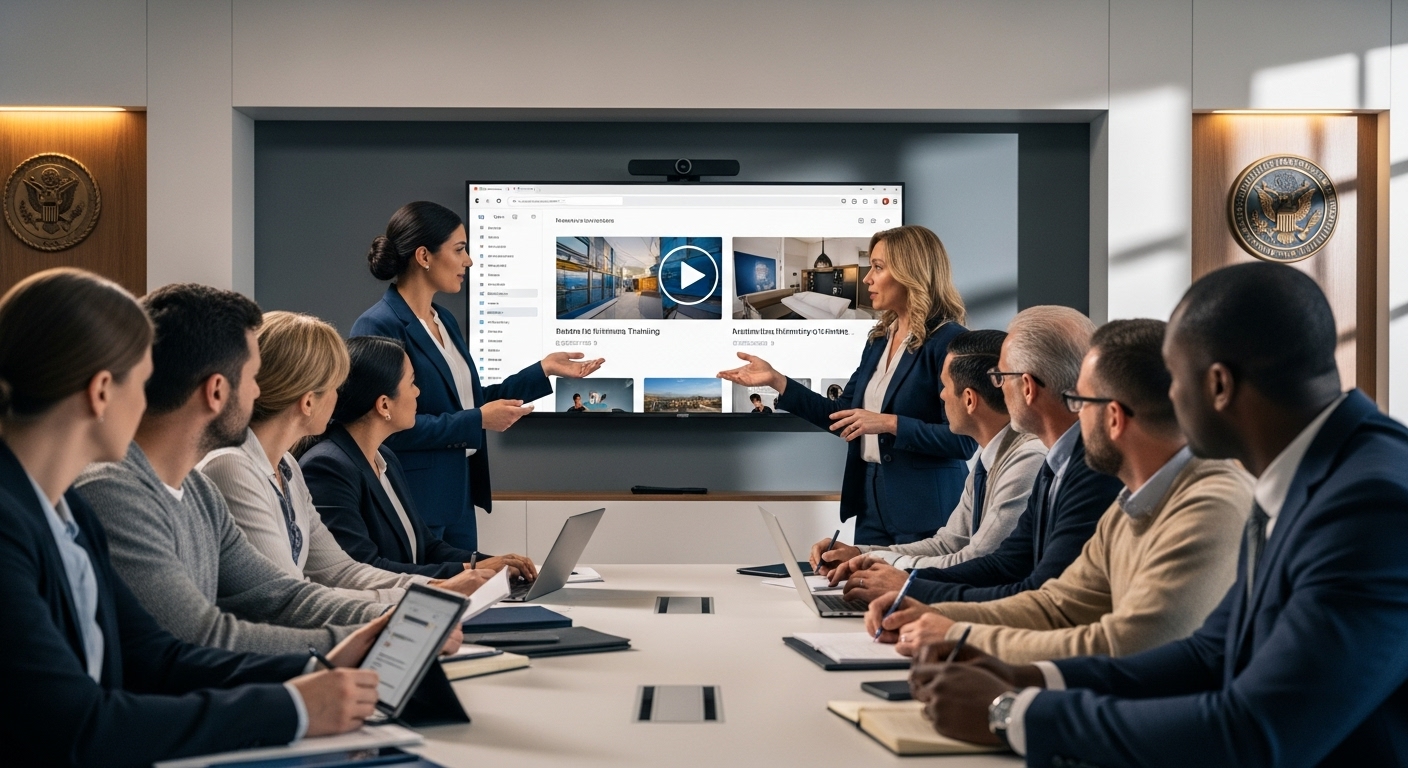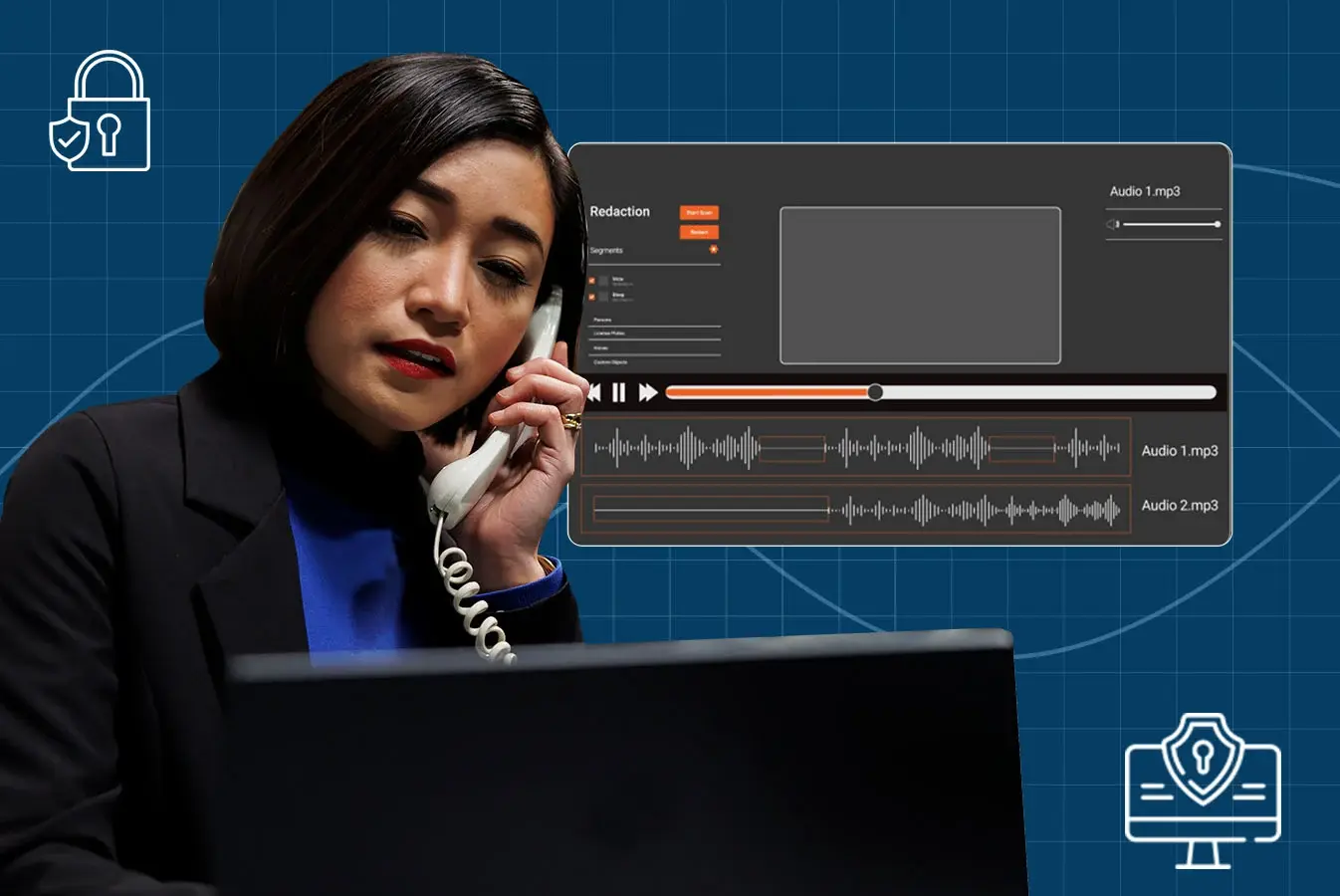Why Government Agencies Are Turning to Centralized Video Platforms for Training and Internal Knowledge Sharing
by Rafay Muneer, Last updated: November 19, 2025, Code:

Government departments are producing more video content than at any point in the past. Staff training sessions, executive briefings, policy explainers, micro learning clips, town halls, and internal presentations have become an everyday part of operations. This shift reflects a broader transformation in how public sector organizations communicate and educate their workforce. Yet despite the growth of video, many agencies still lack a unified system for managing, delivering, and discovering this content. Scattered repositories and inconsistent workflows continue to slow down learning and reduce operational efficiency.
A centralized enterprise video platform is emerging as a critical solution for government agencies that want secure, reliable, and scalable video infrastructure. By consolidating content into a single organized hub, departments can improve internal communication, streamline training delivery, and support better knowledge retention across large distributed teams. The move to such platforms is not simply a technology upgrade. It is a strategic shift that aligns with public sector priorities around governance, accessibility, staff enablement, and digital modernization.
The Challenges of Disconnected Video Storage Across Government Departments
Many agencies currently store internal video content across a patchwork of locations. Divisions may use their own SharePoint sites. Individual teams may keep files on network drives. Remote offices may rely on local servers. Some videos are secured behind restricted folders, while others sit in email threads or collaboration tools.
This fragmentation creates measurable challenges:
• Employees struggle to find training content when they need it
A short demonstration might be buried in a project folder. A policy update video shared last year might only exist in a single location known to one team. The lack of structure slows knowledge retrieval and increases reliance on colleagues to locate information.
• Training becomes inconsistent across teams
With no central hub, different groups rely on different material. Some receive updated content while others continue using older versions.
• Valuable institutional knowledge goes unused
Recordings of workshops, technical demonstrations, or expert explanations often disappear into storage locations that are rarely revisited.
• Governance and security become harder to manage
Departmental video scattered across multiple systems increases the attack surface and complicates compliance with internal security standards.
These challenges are becoming more visible as agencies produce more micro learning videos and more self recorded updates from subject matter experts. Without centralization, the growing volume of video becomes a burden rather than a strategic advantage.
Why a Centralized Video Platform Aligns With Public Sector Training Goals
Government departments invest heavily in training, upskilling, and knowledge transfer. A centralized enterprise video platform strengthens these efforts in several ways.
1. A single source of truth for all internal video
Every training video, policy explanation, leadership message, and recorded workshop lives in one secure location. Staff know exactly where to go to find reliable information.
2. Structured organization across divisions
Departments can categorize and tag videos consistently. This allows agencies to maintain clarity even when hundreds or thousands of internal videos are produced over time.
3. Efficient knowledge delivery
Short summaries, searchable transcripts, and organized topics help users quickly navigate large content libraries.
4. Better adoption of micro learning
As more agencies shift toward shorter learning cycles, video becomes the preferred format for rapid knowledge sharing.
Centralizing these assets opens the door to more systematic learning that is easier for staff to absorb and easier for leadership to maintain.
The Importance of Strong Search and Discoverability in Growing Video Libraries
The scale of internal video content is increasing every year. Agencies that once recorded occasional workshops now capture frequent training clips, departmental updates, and specialized guidance. With this growth comes the need for robust discoverability.
Searchable transcripts allow users to jump directly to the exact segment they need. This is especially valuable when dealing with long videos such as executive briefings or training presentations. Many public sector employees multitask across roles and projects. They cannot afford to review an entire thirty minute session simply to locate one specific point.
Automated summaries help employees understand the context of a video before watching it. This reduces time spent scanning content and supports faster decision making.
AI powered content navigation takes this a step further. Staff can ask questions in natural language, such as “What does the new policy require for international coordination” and receive instant answers based on the department’s video library. This type of contextual search improves productivity and reduces knowledge bottlenecks.
These capabilities are especially helpful when video libraries become large enough that traditional folder based storage is no longer effective.
On Premise Deployment as a Priority for Government Agencies
Security remains a guiding concern for public sector organizations. The ability to run an enterprise video platform fully on premise is often a mandatory requirement.
On premise deployment offers several advantages:
• Full control over content, metadata, processing, and infrastructure
No information leaves the agency’s environment, supporting strict internal policies.
• Compliance with departmental security standards
Government IT teams retain authority over network isolation, encryption, and access controls.
• Flexibility to scale storage and processing according to internal policies
As more video content is produced, agencies can expand infrastructure as needed.
For agencies considering cloud hosting, the ability to operate inside a FedRAMP compliant environment adds further assurance, as long as it is clearly understood that the platform itself is not being presented as FedRAMP certified. This distinction is important to maintain transparency while still offering secure deployment options.
Transforming Internal Training With Self Service Video Creation Tools
Many government departments are shifting from centralized training production to distributed content creation. Subject matter experts, policy teams, and technical specialists often have the best knowledge for training but lack the time or tools to produce traditional e learning modules.
An enterprise video platform supports this shift by allowing teams to:
• Record screen walkthroughs
• Capture policy changes
• Share procedural updates
• Deliver micro learning lessons
These activities help agencies scale their training capacity without requiring large production units. When combined with in video quizzes and LMS connections, the platform becomes an extension of the existing learning ecosystem.
Supporting Live Communication Across Distributed or Overseas Offices
Government agencies often operate across cities, regions, and international locations. Traditional video conferencing tools can strain bandwidth, especially in overseas posts with limited network capacity. Live streaming through an enterprise video platform offers a more efficient way to deliver large scale broadcasts.
Leadership can deliver important updates to staff around the world without overwhelming local connections. Recordings are stored automatically, categorized, and added to the internal library for future reference. This reduces operational overhead and ensures important messages remain accessible long after the event ends.
Building Sustainable Knowledge Infrastructure for the Public Sector
As government operations continue to evolve, the value of video will only grow. Staff expect training to be accessible and engaging. Teams rely on fast access to knowledge. Leadership needs reliable ways to communicate across departments.
A centralized enterprise video platform provides the foundation for modern internal communication. It organizes information, improves knowledge sharing, strengthens training programs, and supports the digital transformation goals that many agencies are pursuing. When deployed securely and managed properly, it becomes long term infrastructure that enhances the efficiency and capability of public sector organizations.
Government agencies that invest in this approach position themselves to respond faster, communicate more clearly, and build a more empowered workforce equipped with the right knowledge at the right time.
Jump to
You May Also Like
These Related Stories

Crowdsource Evidence in Digital Evidence Management Software

Using Video to Reduce Insurance Claims for Health Insurers



No Comments Yet
Let us know what you think